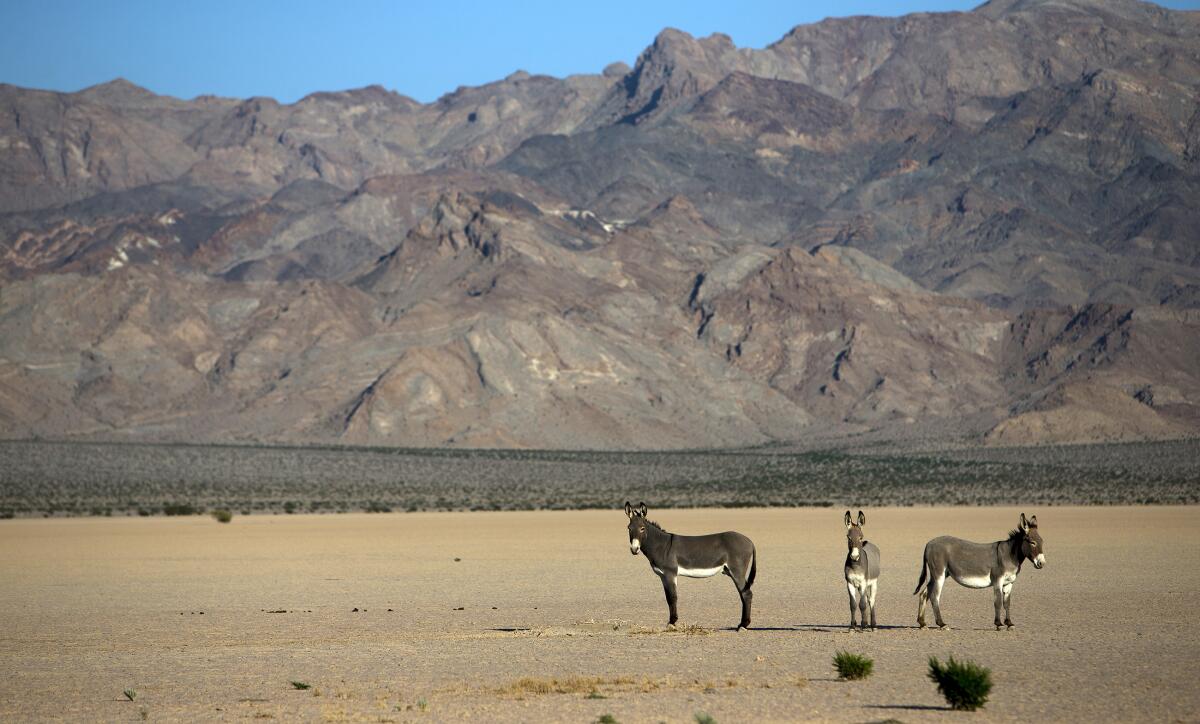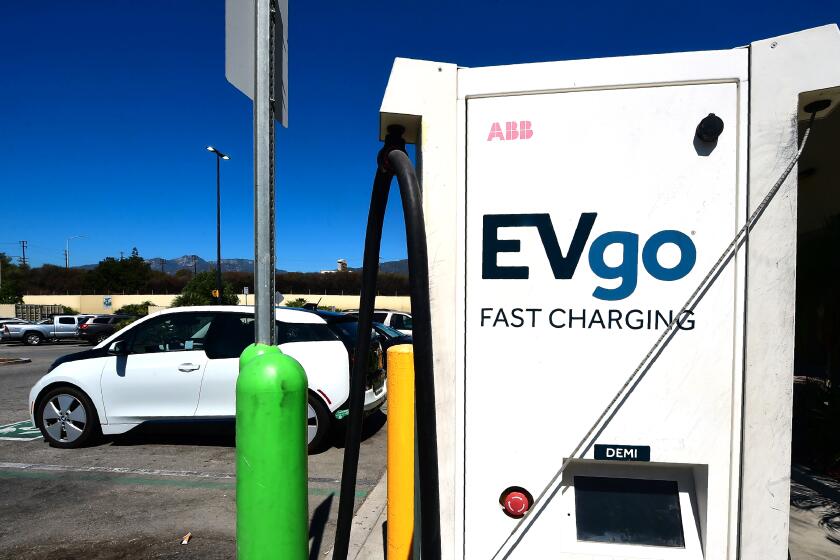Trump targeted California’s deserts on his way out. Biden has to avert the damage

- Share via
In the dying days of the Trump administration, the Bureau of Land Management tried to stick one more knife in California’s back by unilaterally proposing sweeping changes to the 2016 Desert Renewable Energy Conservation Plan, a complicated and delicately-constructed compromise among an array of organizations with competing interests in developing or preserving 10.8 million acres of desert. President Biden needs to withdraw the proposal and preserve the equilibrium his predecessor sought to disrupt.
The plan was crafted to balance the need to provide space for renewable energy projects, such as solar and wind farms, against the need to preserve delicate environments that are home to an array of flora and fauna, including endangered species such as the desert tortoise. In the tradition of compromise, after eight years of negotiations, proposals and counterproposals, at least a dozen public hearings and more than 16,000 public comments, all the affected parties got some of what they wanted, but not everything.
In the end, the plan — which aimed to steer energy projects to parts of the region where they would do the least environmental damage — set aside 3.9 million acres, including the Silurian Valley and the Chuckwalla Bench, for permanent protections. An additional 1.4 million acres were labeled “areas of critical environmental concern” with elevated protections for locales with cultural, historical or natural significance, and 388,000 acres were deemed suitable for renewable energy production.
In the post-Trump era, Gov. Newsom’s plan to phase out fossil fuel vehicles looks increasingly realistic. But it’s going to take a lot of money.
It’s that last part that the Trump administration zeroed in on. Two years ago the Bureau of Land Management announced it would review the deal, a process that culminated Jan. 13 in its proposal to open more protected land to potential development and other uses. The bureau claimed the changes were necessary to enable California to generate the renewable energy that will be needed as the state moves away from fossil fuels. Never mind that the California Energy Commission was part of the previous negotiations, signed off on the 2016 deal, and maintains that sufficient land has already been set aside for development.
So the Trump proposal has less to do with renewable energy — which the administration routinely disfavored over fossil fuel — and more about the former president’s drive to reduce protections for public lands to allow for more exploitation by the oil, gas and mining industries.
So what did the Trump administration offer? Other than leaving the current plan unchanged, two options that each take us deep into the weeds of federal bureaucracy and land management. Broadly, the first would shrink the areas of critical environmental concern by 1.8 million acres, reduce restrictions on energy production in the California Desert National Conservation Lands by nearly 2.2 million acres, and change or delete 68 separate elements of the original agreement on how specific parts of the covered land would be managed.
The second would essentially go after those same management rules, shrink the areas of critical environmental concern by 1.5 million acres and lift restrictions on energy production from a little more than 2.1 million acres. Activists argue that much of the land from which protections would be removed is near existing mining operations, further fueling the belief that the Trump administration used the renewable energy argument as a pretext to help other industries.
After getting attention for shutting down one of the nation’s largest vaccination sites, L.A. COVID deniers aren’t going away. Authorities must be prepared.
Fortunately, the Trump proposals are already on Biden’s chopping block. “On his first day in office, President Biden directed all agencies to review and begin addressing existing regulations and programs that conflict with this administration’s priorities,” an Interior Department spokesperson said. “At the president’s direction, Interior is conducting a comprehensive review of programs and policies, including proposed changes to the Desert Renewable Energy Conservation Plan, to ensure Interior is advancing the president’s vision for a clean-energy future.”
Californians can help that process along by providing feedback to Trump’s proposed revisions as part of the 90-day public comment process at https://go.usa.gov/x7hdj.
It is, of course, vitally important that the nation — and the world — be weaned from fossil fuels as quickly as possible to stave off the worst effects of global warming. But we also must be mindful of the environmental damage from developing alternative energy sources and proceed quickly but thoughtfully to ensure that in trying to fix one existential problem we don’t prepare the ground for another.
This step, though, is an easy one. The Desert Renewable Energy Conservation Plan, while not perfect, was the product of well-intentioned negotiations and planning. It should not fall victim to the skewed priorities of our environmentally unfriendly former president.
More to Read
A cure for the common opinion
Get thought-provoking perspectives with our weekly newsletter.
You may occasionally receive promotional content from the Los Angeles Times.











